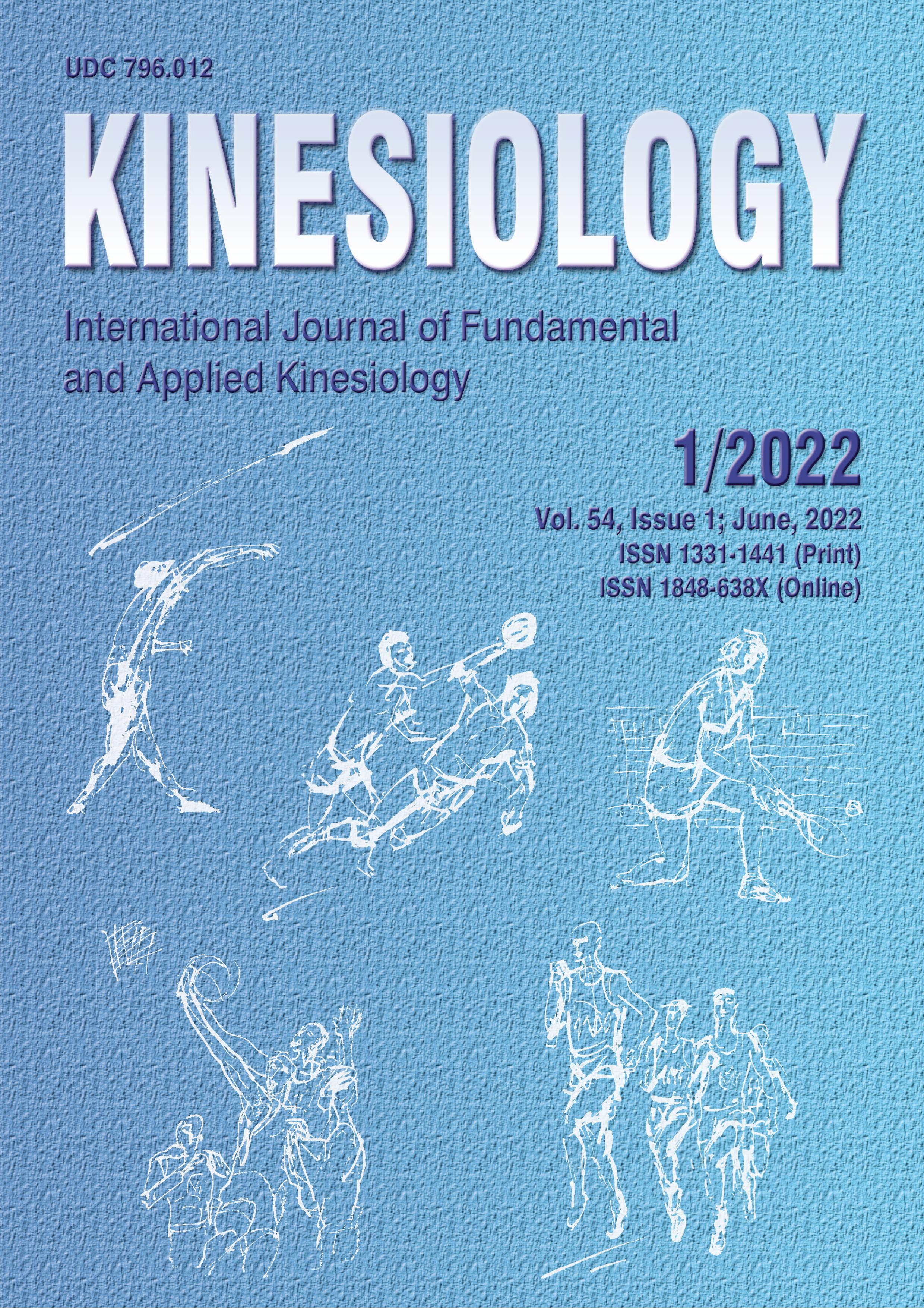ASSESSMENT OF THE LOWER EXTREMITY FUNCTIONAL AND MUSCULAR PERFORMANCE IN YOUNG FEMALE HANDBALL ATHLETES
Abstract
A low physical fitness and incorrect technique could result in muscle strength imbalance and poor dynamic/ static balance in handball players. This study aimed to evaluate the muscular and functional performance of lower limbs in female handball athletes. Twelve female handball athletes performed isokinetic tests at 60°/s, 120°/s, 180°/s, and 240°/s for the knee’s extensor and flexor muscles and functional tests for lower limbs. Regarding the muscular performance, there were no differences between the limbs in the knee’s muscles’ peak torque, while the values of the conventional ratio were below the recommended. With respect to the functional tests, no significant changes were observed. On the other hand, the composite score of the Y-Balance test demonstrated values below the suggested. Overall, the results showed that young female handball athletes had symmetry between the limbs in the muscular and functional performance; however, there was a tendency to muscle imbalance (hamstrings weaker than quadriceps), and dynamic balance deficits that might increase the risk of musculoskeletal injury.
Key words: young female athletes, team handball, muscle strength, functional evaluation
Downloads
Published
How to Cite
Issue
Section
License

This work is licensed under a Creative Commons Attribution-NonCommercial 4.0 International License.
At Faculty of Kinesiology we recognize that access to quality research is vital to the scientific community and beyond. Kinesiology is non-profit journal and all costs of publishing and peer review process are covered by the publisher itself or other funding sources like Ministry of Science and Education of the Republic of Croatia. Full text papers are also available free of charge at http://hrcak.srce.hr/kineziologija. There are no restrictions on self archiving of any form of paper (preprint, postprint and publisher's version).
Articles are distributed under the terms of the CC BY - NC 4.0
Kinesiology does not charge any fees to authors to submit or publish articles in our journal.


